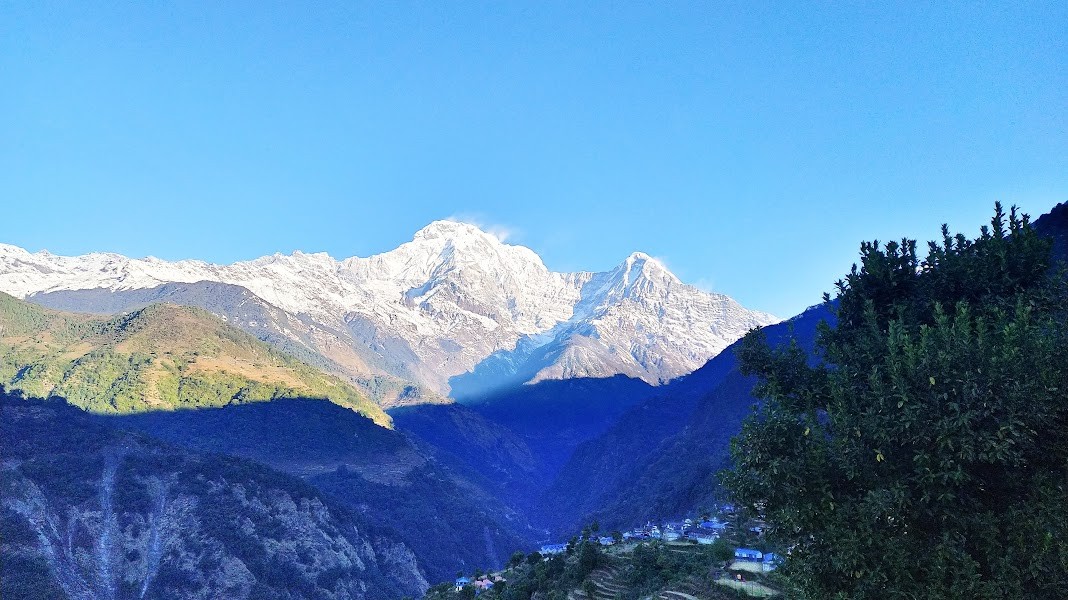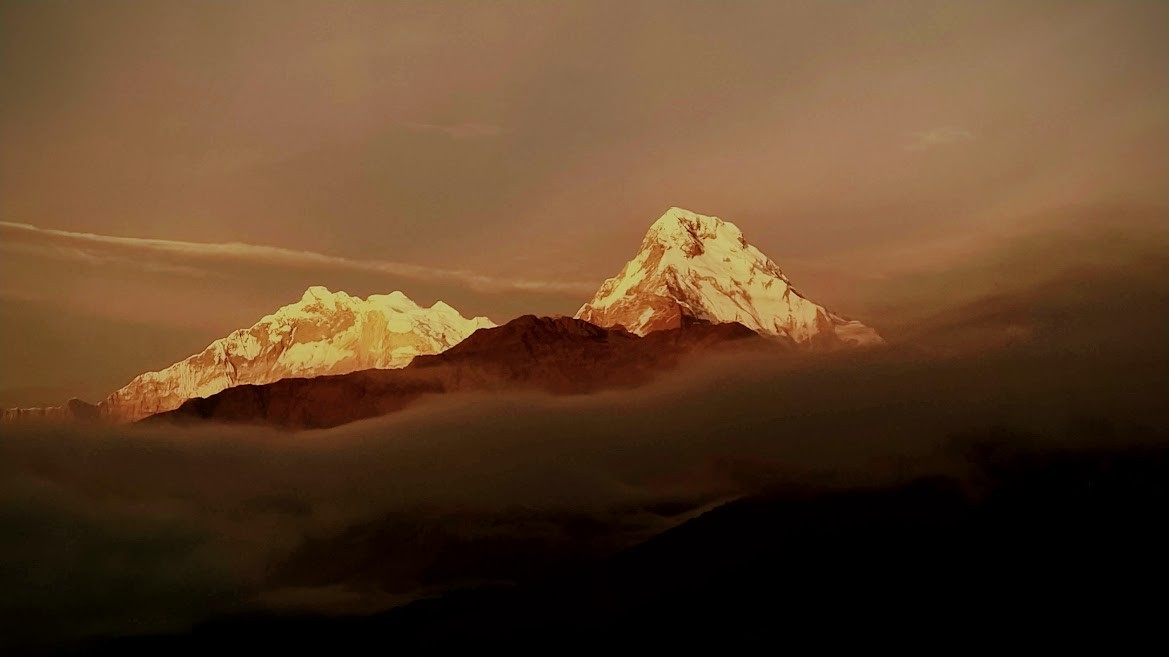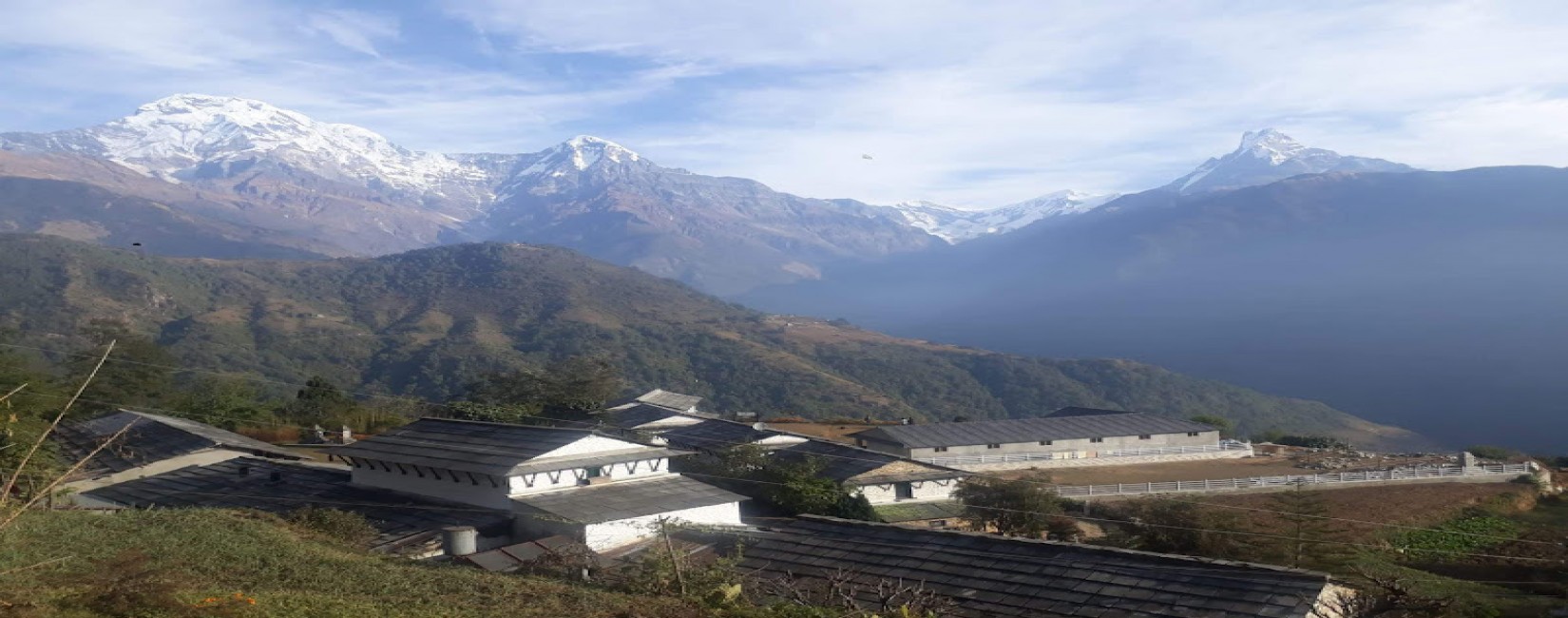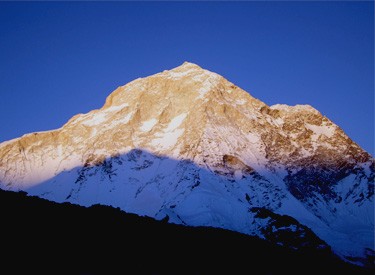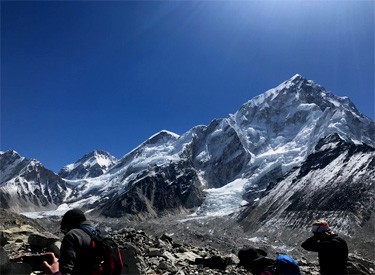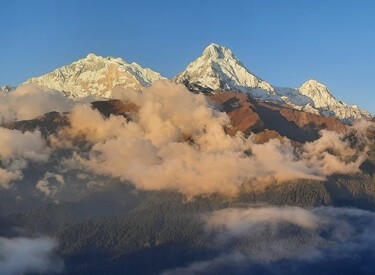4-5 Days Itinerary for Ghorepani poonhill trekking
Day 1 - Drive to Nayapul (trek point) with 4 hrs trek to Ulleri 1,940m
After breakfast, we'll take a car or van to Nayapul, where we'll start hiking. From there, we'll walk 20–3 hours to Tikhedhunga. After crossing the Tikhedunga Khola on the suspension bridge, we walk up a stone staircase with more than 3200 steps, which is quite steep. When we get to Ulleri after climbing the hill, we can see our first mountains: Mt. Annapurna South (7219m) and Hiunchuli (6441m.). stay at the Lodge.
Day 2- Trek to Ghorepani 2,850 m – 06 hrs.
The day starts with a slow climb through a beautiful pine and rhododendron forest to the village of Ghorepani, which is on a ridge surrounded by beautiful rhododendron trees. Most of the people who live in this village are Poon, who is part of the Magar tribe. The top of Poon Hill, which is an hour's climb, is known for its view.
Day 3- Hike to Poon Hill 3,210 m and trek to Tadapani 2,640m – 05 hrs.
Early in the morning, climb to the top of Poon Hill to see the beautiful sunrise over a range of Himalayan peaks, including the world's seventh-highest mountain, Dhaulagiri, and the world's second-highest mountain, Annapurna, as well as the world's eighth-highest mountain, Manaslu, with its majestic "Fish Tail" peak. After having a fun time, go back to Ghorepani and keep hiking up and down through a cool forest until you reach Tadapani, where you'll spend the night.
Day 4- Trek to Ghandruk – Kimche, (04 hrs) – Drive to Pokhara ( 2 hrs)
From this peaceful village, walk downhill into a cool forest of rhododendron and pine trees to reach on top of Ghandruk villages. On reaching Ghandruk, a Gurung village famous for Gorkha soldiers in foreign countries UK-India and Singapore enlisted as soldiers, traditional farmers, and cattle herders of Buddhist/Bon religion and culture. After a good day of walking for a few hours, you can relax in a nice, cozy lodge in Ghandruk, one of the biggest villages in the Annapurna area. We'll have lunch in Ghandruk, then walk an hour to Kimche and drive back to Pokhara from there.
Poonhill temperature in winter
As a short yet rewarding trip in Nepal's Anapurna district, the Poon hill climb is a popular option. The walk provides a stunning panorama of the Himalayas, including Mount Fishtail and the Annapurna Mountains.
It is winter in Nepal in the months of January and February. Temperatures drop below freezing at the highest points along the trail to Poon Hill during this time of year.
The average temperature at Ghorepani is 4 C. But at lower altitudes, you can still get daytime temperatures around 15 C. There may be some light snow.
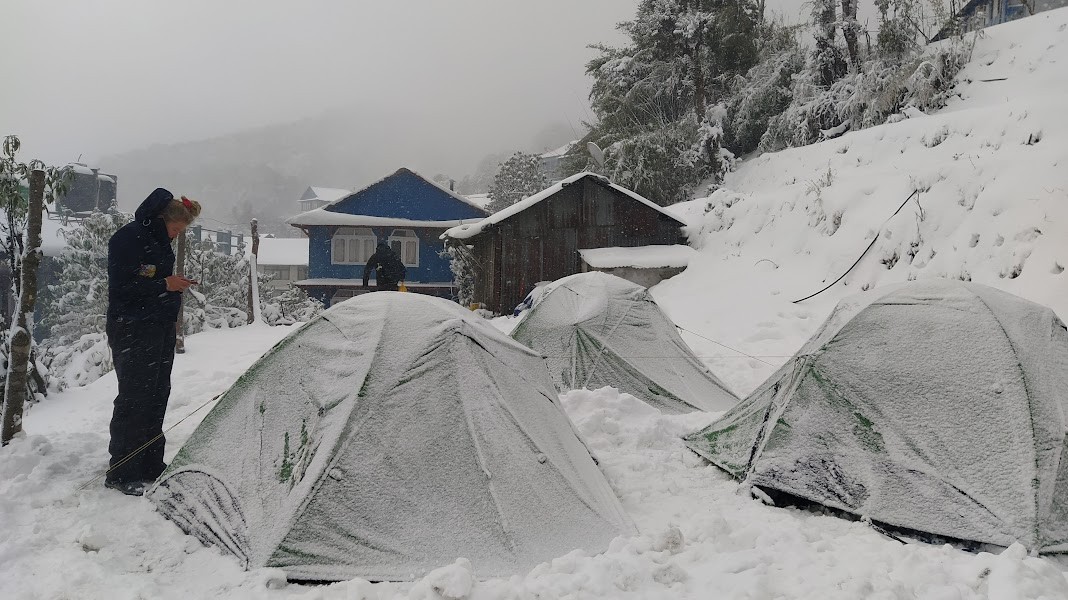
Is trekking in poonhill difficult?
Based on what was said above about the Ghorepani Poon Hill trek, the Poon Hill trek’s difficulty level is low. The Poon Hill trek is easy because it takes place at a low altitude, is short, and has good walking terrain.
The Poon Hill trek is easy, so it's great for people who have never been trekking before or who aren't in as good of shape to do longer, more difficult treks.
Because the Poon Hill trek isn't too hard, a lot of people from all over the country and the world come to Nepal and start this journey. The easy level of difficulty of the Poon Hill trek is definitely a big reason why it is so popular. But if you feel like you can't go on this trip, even though the Poon Hill trek is easy, you can try some things to get ready for it.
Most of the time, one of the best ways to get ready for a trek is to start doing cardio exercises in the morning or evening. Your cardio workouts should be geared toward making you stronger. You could also train for the trek by running up and down a slope or stairs. If you do this, you'll get used to the steep terrain of the Ghorepani Poon Hill trek.
Overall, if you do these things for a couple of months before your trip, Poon Hill trek difficulty, or the challenges of Poon Hill, will be easy for you to handle.
Risk of Altitude sickness in Ghorepani poonhill Trekking?
Poon Hill stands at a height of 3193 meters. Since Poon hill is lower in elevation, there is no chance of getting Altitude Mountain Sickness. Each day, you will climb no more than 500 meters.
When you go trekking in Nepal, you should always know about the risks of altitude sickness. Altitude sickness is easy to understand. It's also called Acute Mountain Sickness (AMS) or just "Mountain Sickness."
It happens when you're at a high altitude and there's not enough oxygen. Altitude sickness isn't something that only happens in the Himalayas. It can also happen on Mount Kenya, Kilimanjaro, and the Inca Trail. The good thing about the Poon Hill Trek is that it is not as high up as the Everest Base Camp Trek or the Annapurna Circuit.
So, there is no chance of getting sick from the high altitude. This is a big reason why people choose the Poon Hill Trek since altitude sickness is a serious risk.
Is a permit necessary to trek in the Poonhill area?
Poon Hill Trek, like other treks in the Annapurna Sanctuary, needs two different permits: a TIMS Card and an ACAP permit (Annapurna Conservation Area Project). To get into the area, you do not need a permit for a restricted area.
If you book your trek with our travel company, we will take care of the permit for you. You can get a TIMS Card from the Nepal Tourism Board or the Trekkers Agencies' Association of Nepal (TAAN) Secretariat in Kathmandu if you want to trek on your own.
There are three kinds of TIMS Cards. The green one is for people who are traveling alone, the blue one is for organized groups, and the pink one is for people from SAARC countries.
You need to go to the Nepal Tourism Board in Kathmandu or the Tourist Office in Fewa Damside, Pokhara, to get an ACAP Permit.
For both the TIMS Card and the ACAP, you'll need your passport, information about your insurance, passport-sized photos, and the contact information of someone in Nepal.

Insurance for Ghorepani poonhill trekking
Although the Poon Hill Walk is a shorter and easier trek than Everest or Annapurna Base Camp, it is still necessary to carry travel insurance when trekking in this area. We strongly advise you to get comprehensive travel insurance for this expedition, even if it appears to be unnecessary.
While traveling in the high Himalayas, you may encounter unexpected scenarios such as accidents and altitude sickness. Your policy does not need to include helicopter evacuation. However, make sure you have insurance that covers all medical expenses, natural calamities, trip cancellations, and theft. Though there are relatively few reputable travel insurance providers, we strongly advise you to use World Nomads.
Food and Accommodation around the Ghorepani poon hill trek
The route to Poon Hill is dotted with hotels and lovely teahouses. Most teahouses offer comfortable lodging, delicious meals, and modern conveniences like Wi-Fi, hot showers, and power outlets.
Pokhara is home to numerous five-star hotels that can meet your every need and offer accommodations in accordance with your travel budget. However, while you're out on the trail, teahouses provide the bare necessities, such as a room with two single beds, a thin mattress, sheets, and a pillow.
Most of the restrooms are communal and do not have running water. Extra fees may be required to use amenities like the hot shower, Wi-Fi, and power outlets.
There are also scrumptious food options available at teahouses. Rice and lentils, known as dal bhat, are a staple in the Himalayas.
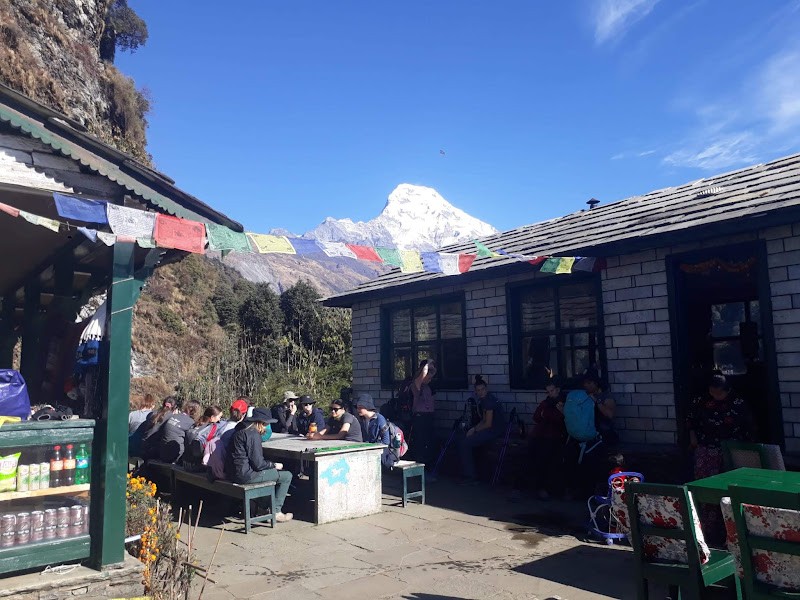
Because the serving size of Dal Bhat is usually sufficient to satisfy the hunger of a hiker, it is the food of choice for most hikers. Some western menu items are available as well, albeit the quality may not match that of a more upscale eatery.
Things to pack for poonhill trekking
When you're hiking in the mountains, your gear is your best ally. No matter the destination, having the proper gear is essential. The right equipment might mean the difference between life and death in dangerous situations.
Having fun or suffering during an experience is entirely dependent on having the proper gear. You have your flights and guide scheduled; all you need is a pair of comfortable shoes that won't cause you blisters and a rucksack that isn't too heavy.
Make the most of your time in Poon Hill by coming prepared. Remember this before we go. To be clear, we are not climbing, but rather walking. Therefore, you can forget about bringing out the climbing gear anytime soon.
Below we present you a basic comprehensive packing list suitable for any trek in Nepal including the Poon Hill Trek:
- Duffel Bag
- Rucksack with Rain Cove Daypack
- Hiking Boots
- Sandals or Shoes
- Hiking Socks
- Trekking Poles
- Inner Socks
- Thermal Baselayer
- T-Shirts
- Fleece Pullover or Jacket
- Light Weight Thermal Tops
- Waterproof Jacket
- Sports Bra for Her
- Hiking Shorts
- Hiking Pants
- Waterproof Pants
You can bring your ultimate backpack too if you wish to.
Network and Signal
There is pretty good network coverage on the trail. During the trek, both NTC and Ncell work fine, but service is weak at Poon Hill. From the top of Poon Hill, you might not always be able to connect to the network.
Most of the trail has 3G data coverage for mobile internet. Most teahouses have WiFi, but you have to pay extra for it. WiFi is the best way to stay in touch with your family and friends. But the connection can slow down when a lot of people are using it at once.
Conclusion
The Poon Hill Trek is a short, easy trip through rhododendron forests to a lookout point with a great view of the Himalayas. If you hike to Poon Hill early in the morning, you can see a beautiful sunrise over the mountains. You can see the mountains from this trek and learn about the culture of the Gurung people who live there.
Hence, Ghorepani poonhill provides you with the best and short experience of trekking in Nepal while captivating your eyes and soul with its lush natural beauty and rich ethnic cultures.
